There is a huge number of plants that can decorate any garden plot and make it brighter and exotic. Such cultures include Azalya Japanese garden - a plant that simply amazes with its appearance and lush flowering.
Many know this oriental plant as a room flower, very demanding in care. Azalea Japanese without problems can be grown in the country area, decorating with its bright colors the whole garden. And at least a large number of gardeners to be afraid to breed Azalia on their own, it is worth remembering that if all the nuances of landing and leaving you will get a beautiful and healthy shrub.
In this article, we will consider the features and description of Azalea Sadovaya Japanese, we describe the most popular varieties. And also tell about all the main rules of agrotechnics of growing this plant in the garden.
Features and description of Azalea Japanese garden
Azalea Japanese garden for some signs belongs to the group of blooming rhododendrons and is a representative of the herassk family. Do not fully identify Azalia with rhododendons, they still have differences. This plant is an evergreen or leafy shrub, less often a small tree. Azalea Japanese is mostly evergreen plant and does not drop their leaves for the winter. In nature, this culture grows in Japan, China, India and the Caucasus. However, today's excellent Azalia Japanese common worldwide and is a welcome guest in gardens and orangene. As a garden plant, Azalia first began to be grown in Japan and it was in this country that the culture has become a practically national symbol. The Japanese often grown azalia as a bonce.
Azalea garden relatively young plant, because in Europe and America, it began to grow only at the beginning of the last century, and before that time Azalia could be found in the premises as a room plant. Garden Azalea is considered a very decorative plant, which perfectly trimmed and forming the crown. Japanese azalya landing and care has its own characteristics and difficulties that need to be taken into account when growing exotic beauty.
Azalea Japanese Sadovaya description:
- Japanese azalea is grown as an evergreen shrub, is a perennial with a very slow growth rate.
- In nature, the height of this shrub can reach 3 m, but under the conditions of garden growing, Azalya reaches only 50 cm -1.5 m, depending on climate and care.
- The shoots of Azalea Japanese garden is very fragile and elegant, covered with light gray bark. They are located very tightly to each other, which is due to strong branches.
- Japanese azalea shrubs are very compact due to the location of the shoots, so perfectly suitable for creating unusual landscape compositions and alive hedges.
- Azalea Garden shrub branches are covered with very small leaves, which in length reach only 2-3 cm. The form of the leaves are oblong, lane acetoid with a glossy surface. The bottom of the sheet plate matte and has a slight omission. The color of the foliage is dark green.
- Flowers of Japanese azaleas are the main value and pride of this type of plant.
- Flowers in the form of funk-shaped, tubular or flat, depending on the variety. They can also be simple, small, very large and terry.
- The shades of the inflorescences of the Japanese azalea can also be diverse: from a democratic white color to a bright red or pink, you can also meet the flower color palette and two-color azalea flowers.
- Japanese azalea blooms in the middle of May and can please large quantities for 1.5-2 months, depending on the variety and climatic conditions.
- During flowering, the azalea bush is completely covered with beautiful and fragrant colors, sometimes there are no foliage and branches behind them. At this time, the plant looks like a big and bright ball.
- Winter hardiness Azalea Japanese Sadovaya allows you to grow it on the territory of Russia and other CIS countries, as it can withstand the temperature in 27 degrees.
- This plant is widely used in landscape design to create original garden compositions and various alive hedges.
A variety of varieties of azaleas Japanese garden
To date, the breeders are derived a huge number of varieties of Japanese garden azaleas, which are distinguished by the conditions of cultivation, the peculiarities of the appearance and the level of winter hardiness. It is from these all indicators that the choice of a specific variety is depends on the landing site. Consider the most popular varieties of Azalea Japanese.
- Azalea variety "Blat". This type of plant is characterized by small and simple flowers, which have a very elegant form. Azaanya grade Bloss in the color of Azalea's inflorescence of azalea.
- Grade "Kermesina Rose". Very unusual and beautiful variety of Azalea Japanese. Flowers have a delicate light pink shade with bright, distinctly visible, strip in the center of petals. During flowering, such a bush looks very effectively.
- Grade "Melina". A wonderful low-length shrub that is suitable for landing along the garden tracks or borders, as well as to create interesting living ingredients and garden compositions. In height can reach no more than 30 cm. Flowers of the terry shape of a bright pink shade.
- Grace "Geisha ash". This variety is also low. Azalea Japanese Geisha ash in height can reach only 25-30 cm. Flowers of a gentle purple shade, which during flowering completely cover the entire shrub.
- Sort "Geisha Orange". Azalea Japanese Geisha is distinguished by the bright alami flowers of a beautiful shape, the bloom of which begins in May or in June.
- Azalea variety "Fridoline". Low stranded bush, which blooms very lush. Mid-sized bright colors. He is rightfully considered one of the most beautiful and popular varieties of Japanese azalea.
- Grade "Rosintta". Beautiful compact shrub with terry flowers. This plant will be spectacular to look at any landscape composition due to its bright pink colors, which very much resemble roses.
- Grade "Marushka". Also a fairly popular variety of Azalea Japanese, which blooms with small red flower, whose flowering begins in May.
- Grade "Adonis". This variety of azaleas is characterized by white delicate flower.
- Grade "Kanzonetta". A low shrub, which is in height reach 50 cm. During flowering, the ball-like bush is completely covered with carmine-pink flowers.
- Grade "Shot Algae". Very compact shrub, which has a pillow shape. In height can reach 50 cm. The flowering begins in May with reddish-orange flowers.
- Azaleya's variety of Japanese Mathers Day. This azalea is characterized by rather large red colors, which in diameter reach 10 cm.
- Grade "Toreador". Japanese dwarf variety variety, which is often grown not only in the garden, but also as bonsai. Flowers in small aluminum flowers.
- Variety "American Beauty". Tall variety of azalea, which can be in height to reach 2 m. Blossoms of shrub. Large ruby-pink flowers with a golden core.
All varieties of Azalea Japanese perfectly complement each other and combine with various flowering plants.
Azalea Japanese Garden Reproduction: The most common ways
Azalia Japanese garden can be diluted independently on its garden plot. To do this, you need to know what methods this exotic beauty breeds. The most common are vegetative reproduction of stalling and the division of the bush, as well as seed reproduction. Each of these methods has its own characteristics and difficulties. Having considered a description of the options for breeding Azalea Japanese Sadovaya, you can choose for yourself the most acceptable.
Seed reproduction of azalea Japanese garden
- This method of gardeners are extremely rare, as waiting for the flowering shrub will have for quite a long time. After about 5-6 years, you can admire the flowering azalia of a garden grown from seeds.
- Seeds of this plant can be purchased in specialized stores, and you can collect yourself, if you already have Azalea on the site and you want to try your hand in such breeding plants.
- Before sowing, seeds can be treated with a special solution for disinfection.
- For better shooting of Azalea seeds, you can spend stratification for several months. To do this, use a container with a damp soil, into which the seeds close and placed in the refrigerator at a temperature of 2-4 degrees.
- At the end of winter or early spring, you can start cropping seeds into a greenhouse or greenhouse. If there are no, you can choose a spacious container.
- For the full spout of the Seedlings of Azalea, Japanese Sadovaya Pick the soil mixture, which should consist of peat, sand, leaf land and compost as a fertilizer.
- The soil must be well exploded and pouring.
- Further, the soil stacked the seeds of azaleas, sprinkling a small layer of sand. From above, the container must be covered with a film or glass.
- Daily care for seedlings includes mandatory ventilation and regular soil moisturizing.
- After the appearance of several leaves, seedlings are divened to individual pots, where they grow until the landing in the open ground. You can do it a year after landing.
Azalea reproduction by Japanese division bush
- This method is also not very popular among gardeners.
- He is afraid to be used due to the fact that after dividing the Kusta Azalea, it is necessary for a long time to seek the perfect form of the crown of two bushes.
- The division needs to be carried out in the spring before the start of the movement of the juice in the shrub and the appearance of the kidneys.
- Not digging the entire bushes, carefully separate the acute shovel part of azaleas. It is important to use a plant with a large number of shoots and a well-developed root system.
- After separation, it is important to handle the division of wood ash.
- Place both parts of Azalea at a permanent place.
Azalea Japanese Silent reproduction
- This method of reproduction of azalea Japanese garden is the easiest and therefore most common. Although as a result, the flowering plant you will receive no earlier than in 2-3 years.
- The rooting of Chenkov must be carried out in March-April.
- At the beginning it is important to properly prepare the planting material. For this, the top shoots are suitable. which are cut on the cuttings at 10 cm.
- Remove the kidney and unspoken leaf. From the bottom of the cutting, it is also necessary to remove all the leaves, leaving only 2-3 on the middle of the cutting.
- At the bottom of the cutting, make a sharp knife with a neat cut in 45 degrees and place all the cuttings into the corneter solution for several hours. This is necessary to increase the percentage of the rooted cuttings of azaleas.
- Take a small pot or plastic cups, the main thing is that they have holes in the bottom. Fill them with peat and moisture well.
- Place the cuttings separately into each container at a depth of 2-3 cm.
- Next you need to cover all cuttings with a film. Watch that the film does not touch the cuttings themselves.
- For full germination, it is necessary to maintain a temperature of 18-22 degrees and air cuttings.
- The rooting of Chenkov leaves about 1-1.5 months, after which they can be planted into open ground.
Stages of training before planting azalea Japanese garden in open ground
To obtain a beautiful and healthy Kusta Azalea Japanese, it is important to carefully prepare before landing. The main condition is correctly selected plants seedlings and a landing space on your site. Also do not forget to pay attention to the condition and quality of the soil at the landing site of Azalea Sadovaya.
Stage 1. Selection of azalea seedlings Japanese garden
- First of all, the seedlings of Azalya Japanese Sadovaya acquire only specialized nurseries or garden centers, which are professionally engaged in breeding various plants. Here you can get a professional consultation on the cultivation of a particular variety, as well as get help in the selection of a plant variety, the most acclimatized to your area.
- You can purchase azalea garden seedlings from acquaintances, so you can see the result, which in the end you will get.
- Before buying Azalia Japanese garden, pay attention to the container in which it grows. It should be free enough, as otherwise the root may be damaged.
- The soil in the container should be wet and clean, and the shoots themselves are elastic. You can try to pull the seedling on yourself. A healthy and strong plant will remain in place.
- On seedlings there should be no visible damage and signs of diseases and pests.
- When choosing a specific variety, focus on your climatic conditions, as well as to the place where you are going to plant Azalia Japanese garden.
Stage 2. Choosing a place to land Azalea Japanese
- Azalea Japanese prefers to grow in places flooded with sunlight.
- However, remember that there should be no direct sunlight. Give preference to plots with a small shadow.
- The selected plot for planting azaleas should be protected from wind and drafts.
- Azalia can be placed next door to the most different plants. Since Azalea bushes are quite compact, they can be placed even on the most small area of \u200b\u200bthe garden.
- For these plants, it is ideal for a place along the gardens or borders, as well as the places that can be applied to the living hedge.
Stage 3. Choice and soil preparation for landing Azalea Japanese
- Azalea Japanese garden prefers to grow on loose and fertile soil.
- She is categorically not suitable loam and limestone soil. In such a place azalea will not grow.
- Pick the place with sour soil. If you have alkaline soil, be sure to add coniferous needles into it.
- Soil at the site of landing should be well to skip moisture.
- Before landing azaleas, the Japanese soil must be carefully overhaul and make peat, coniferous land and leafy land, as well as organic fertilizers.
- If the land is not at all suitable at your garden plot for landing Azalea Japanese, you can purchase soil in a specialized store for these plants. Then remove 50 cm of the upper layer of the soil on the selected area and replace it with the purchased one.
Azalea Landing Technology Japanese Sadovaya
- Landing Azalea Japanese garden is carried out in spring or over the summer in case you bought a seedling in a container.
- At the selected area, prepare landing pits. Each of them should be quite large sizes to accommodate a seedling with an earthen room. The depth of the pit should be at least 50 cm and width 70 cm.
- At the bottom of each pit, place a drainage layer about 15-20 cm. Small stones, gravel or broken brick can be used as a drainage. It is necessary to prevent stagnation of water from the roots.
- Seedlings in containers are pre-abundantly water with water so that they can then get azalia without any problems without damaging her roots.
- On the drainage layer, pour some peat and fertile soil.
- Then place the Azalea Japanese seedlings in the landing pits in such a way that the earth on the root system is completely fit in the pit.
- Carefully sprinkle the pit soil mixture and press a little with your hands, sealing the earth.
- The soil around the seedlings spray mulch to prevent moisture evaporation. Dry sawdust, coniferous needles and trees bark are used as mulch.
Azalea Growing Agriculture Japanese Sadovaya: Secrets and Nuances Care
Azalea Japanese is a rather whimsical and capricious plant, so its cultivation should be paid attention to. Care for Azalia Japanese Sadovaya is regular watering, feeding, pruning and preparation of the plant for winter. As a result, exotic azalea will delight you with bright and lush flowering.
Watering
Azalea Japanese prefers to grow in a wet soil, so she needs regular watering. In no case cannot be cutting the plant, the soil should always be slightly wet, especially during flowering. During the formation of foliage and buds, Azaly reacts well to spraying. However, after the appearance of colors, it is better to stop spraying, as stains may appear on the petals. In the fall, the frequency of irrigation is reduced. At the same time, watering the plant is necessary only with rainwater or stunned, besides, watering is not under the root, but into the groove around the plant.
Loosening and mulching
It is not recommended to loose the soil in the roller circle, since the root system has a surface surface and you can damage the roots. To prevent the appearance of weeds and saturation of the soil with oxygen periodically update the mulch layer around the plants. As a mulch, you can use wood sawdust, coniferous needles, moss, dry peat or bark of trees.
Podchar
- Full growth of azaleas depends on fertilization. When landing azaleas in the soil you need to add compost.
- Then the plant is poured by infusion of a cowboy, it is usually in spring time before the start of the active growing season.
- Before the start of azalea flowering, it is necessary to add fertilizers that contain potassium, phosphorus and nitrogen. Complex mineral fertilizers can be used.
- When making fertilizers, remember that they should not be chlorine and lime, as well as wood ash. It will harm azaleas.
- After the end of the flowering plants fertilize the mixture of potash and phosphoric fertilizers. This is necessary so that the plant gets strength before in winter.
- Once a month, it is recommended to water the plant with acidic water. In the outstanding water, add some lemon acid.
Pruning azalea
Azalea pruning is produced at the end of the flowering period. All damaged or faded shoots are removed by the sharp secateur. The rest of the shoots are cut into partly throughout the bush to form the right form. It is necessary to cut the bushes that have already grown in the open soil. Cutting places to work with the water. Also, experts recommend to remove the blurred buds of colors for stimulating new growth.
Fighting diseases and pests
Like any other plant, Azalea is susceptible to the appearance of pests and diseases.
Pests:
- aphid;
- ticks;
- shields.
To combat these pests, use special drugs - insecticides.
Diseases:
- chlorosis;
- phytoofluorosis;
- fusarious fading.
These are fungal diseases that can be treated with fungicides with a slight infection. But with a larger defeat, save the plant is unlikely to succeed and you will have to remove it and process the place where it grew.
Preparing the Plant for Winter
Many varieties of Japanese azaleas are able to endure frosts, however, in conditions of harsh cold, the plant requires additional shelter. First of all, cover the root system with a snack or straw. Then build a frame from the wire around the plant and cover the underfloor nonwoven material. If there is little snow fell in winter, pour the snow to the covered plant. In the spring, all the shelter must be removed.
Photo azalea japanese garden
More clearly to see all the features of the appearance of Azalea Japanese Sadovaya can be seen on the photo suggested below.
Azalea Japanese - East Beauty, who has taken root in our gardens. Putting such a plant on its plot, you will certainly create a beautiful garden composition and attract the admiring views of the neighbors to this shrub.

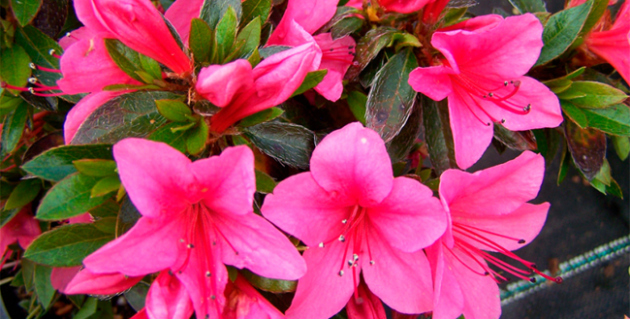
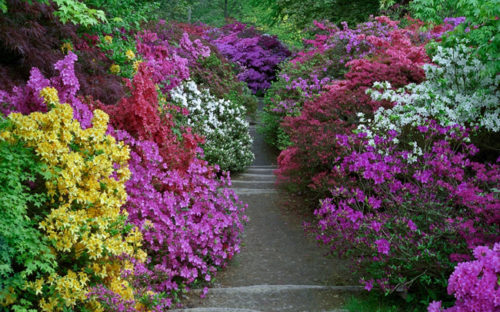
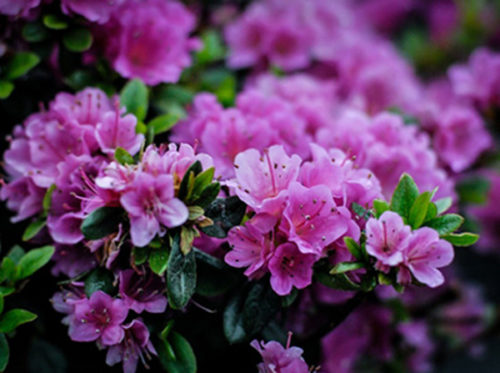
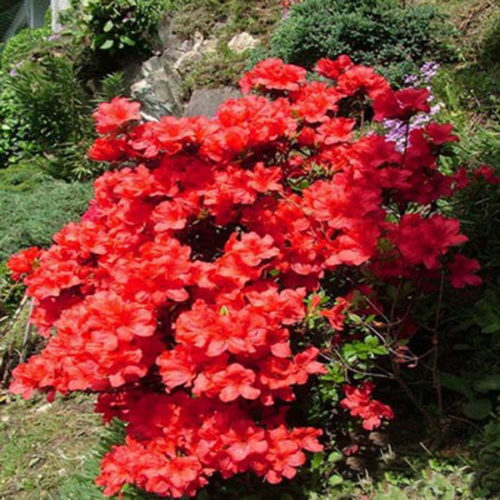
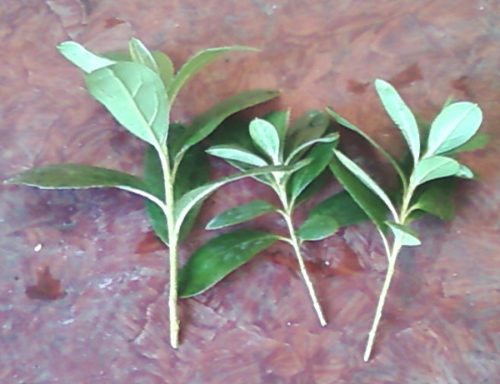
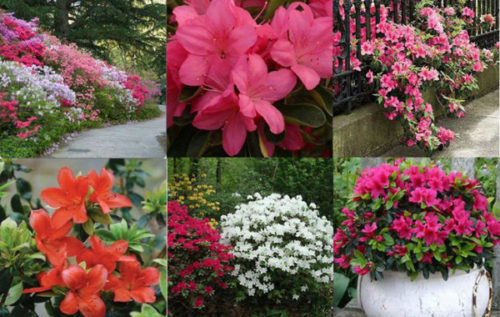
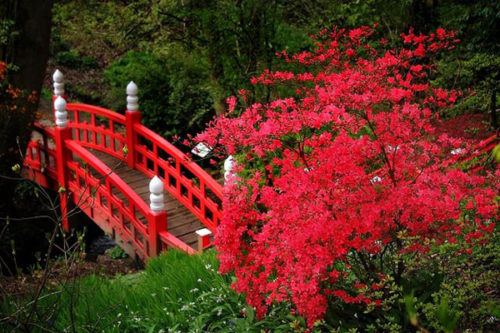
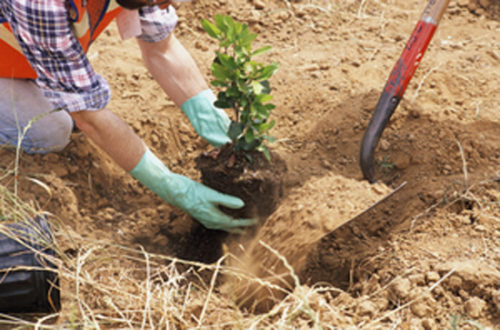
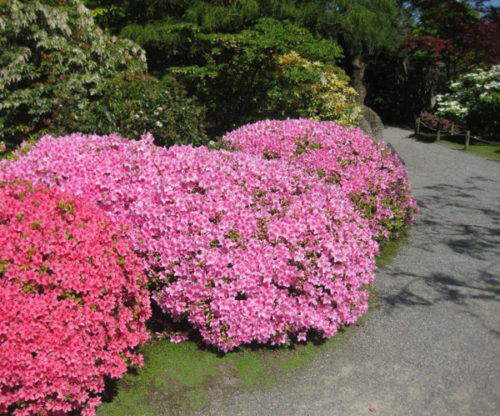
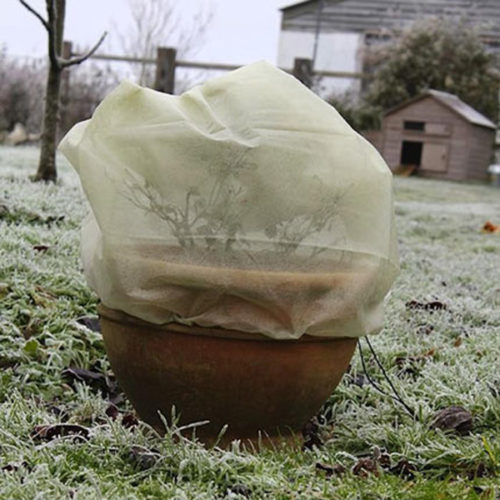
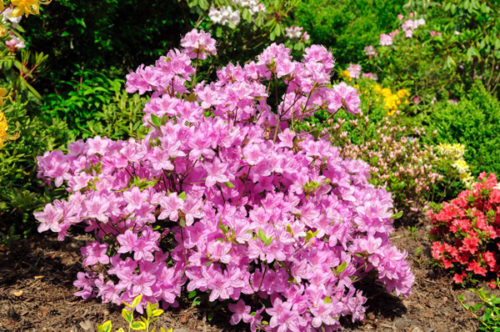
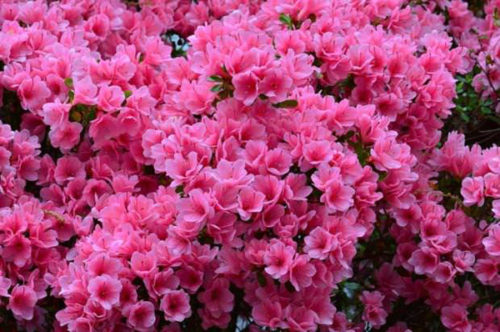
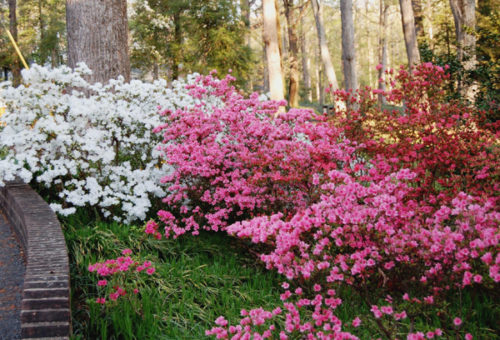
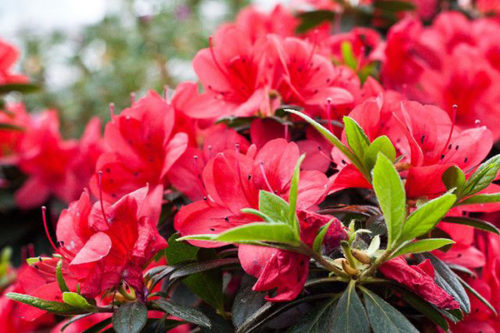












 Start a discussion ...
Start a discussion ...